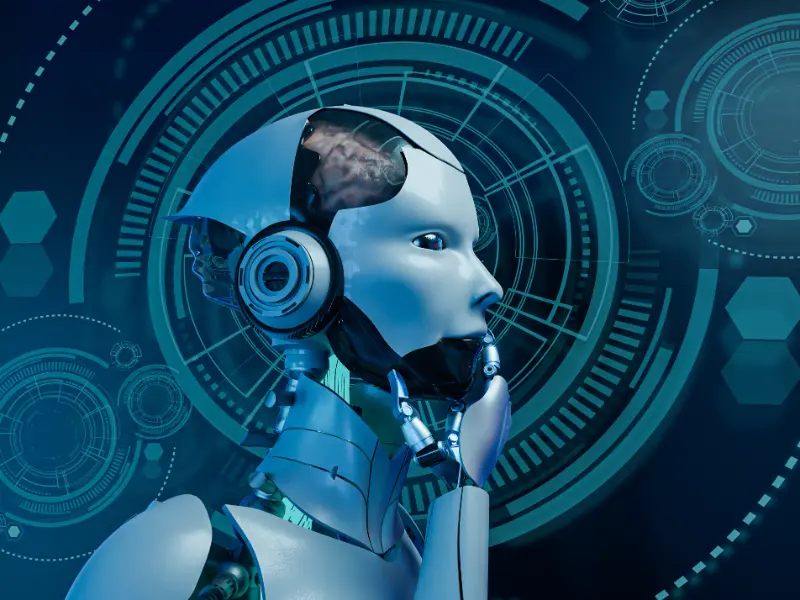- Speech recognition systems often employ large amounts of training data to learn the parameters of the acoustic and language models, and they may use techniques such as transfer learning and fine-tuning to adapt to specific domains or accents.
- Speech recognition is a fundamental application of artificial intelligence (AI). AI, broadly defined, refers to the development of computer systems capable of performing tasks that typically require human intelligence.
- Speech recognition involves teaching computers to understand and interpret spoken language, a task that was traditionally thought to be uniquely human.
Speech recognition technology, a subset of artificial intelligence, has experienced remarkable advancements in recent years. AI-powered speech recognition systems can understand and transcribe spoken language into text with increasing accuracy.
These systems rely on sophisticated algorithms, often leveraging deep learning techniques, to interpret audio input and convert it into text.
What connection exists?
The connection between speech recognition and AI lies in the complexity of the task and the methods used to accomplish it.
Pattern recognition
Speech recognition systems rely on sophisticated pattern recognition algorithms to decipher the acoustic patterns in spoken language and map them to textual representations. These algorithms often involve statistical models, machine learning techniques, and neural networks, all of which fall under the umbrella of AI.
Learning and adaption
AI techniques such as machine learning and deep learning are used to train speech recognition models. These models learn from large datasets of labeled speech samples, adjusting their parameters to improve accuracy over time. This process mimics the way humans learn language, making it a quintessential AI task.
Complex decision making
Deciphering spoken language involves making complex decisions based on uncertain and ambiguous input. Speech recognition systems must account for variations in pronunciation, accents, background noise, and other factors. AI algorithms are well-suited to handle this kind of decision-making process, allowing speech recognition systems to adapt and perform well in diverse real-world scenarios.
Integration with AI applications
Speech recognition is a crucial component of many AI applications, including virtual assistants (like Siri, Alexa, and Google Assistant), speech-to-text transcription services, voice-controlled devices, language translation tools, and accessibility features for people with disabilities. These applications leverage AI technologies to deliver useful and intuitive experiences based on spoken interactions.
Also read: US Senate proposes $32b boost for AI innovation
Seven ways to work
1. Audio input
The process starts with capturing audio input using a microphone or any audio recording device.
2. Preprocessing
The captured audio signal undergoes preprocessing, which involves filtering out noise, amplifying the signal, and possibly compressing it to reduce its size.
3. Feature extraction
The preprocessed audio signal is then converted into a format suitable for analysis. This often involves breaking the signal into small, overlapping segments called frames. From each frame, features such as Mel-Frequency Cepstral Coefficients (MFCCs), spectrograms, or other acoustic features are extracted. These features capture information about the frequency content and intensity of the audio signal over time.
Also read: SoftBank uses call centre AI to calm the sound of angry customers
4. Acoustic modeling
In this step, statistical models are used to map the extracted acoustic features to phonemes or sub-word units. Phonemes are the smallest units of sound in a language. Acoustic models can be based on Hidden Markov Models (HMMs), Gaussian Mixture Models (GMMs), or more recently, deep neural networks (DNNs) such as Convolutional Neural Networks (CNNs) or Recurrent Neural Networks (RNNs).
5. Language modeling
Once the acoustic model has generated a sequence of phonemes or sub-word units, a language model is used to assign probabilities to sequences of words. This helps the system choose the most likely sequence of words given the input audio. Language models can be based on n-gram models, recurrent neural networks (RNNs), or transformers.
6. Decoding
In this step, the output of the acoustic model and the language model are combined to generate the final transcription of the spoken input. Various algorithms such as the Viterbi algorithm or beam search may be used to find the most likely sequence of words given the acoustic and language models.
7. Post-processing
Finally, the recognised text may undergo post-processing steps such as punctuation and capitalisation correction, spell checking, and contextual analysis to improve the accuracy and readability of the transcription.

